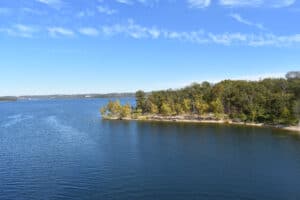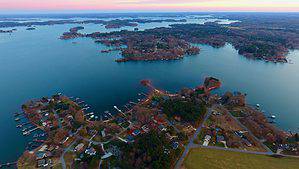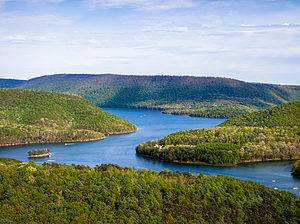About Lake Havasu
Though the size of Lake Havasu is small, it is a desert gem! Beautiful Lake Havasu is a water reservoir located in western Arizona. The reservoir itself and nearby Lake Havasu City are both a site of water recreation and tourist attractions, which bring Arizona residents and other visitors from across the United States to Lake Havasu’s shores. This beautiful desert reservoir sits on the border of Arizona and California, where it is the result of the Parker Dam that helps control the flow of the Colorado River.
Lake Havasu was constructed from 1934 to 1938. Since then, the area around Lake Havasu attracts hundreds of thousands of visitors each year, who come to enjoy an oasis of water recreation in the middle of the desert. Lake Havasu has dozens of miles of navigable waterways, and so draws many retirees to its lakeshore communities and vacation visitors.
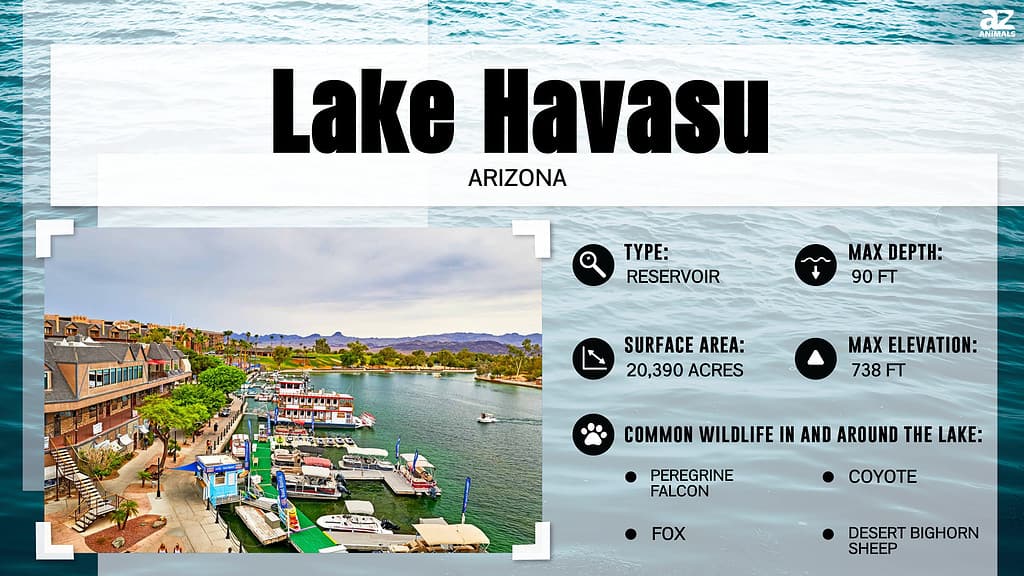
Size of Lake Havasu
Lake Havasu is about 45 miles long and about 3 miles across at its widest point.
Lake Havasu itself is 619,400 acre-feet or nearly 764,000,000 square meters in size. It has a surface area of about 30.5 square miles. The lake’s average depth is 35 feet, although beach swimming areas are kept shallow, while other parts of the lake get much deeper. At its deepest point, Lake Havasu plunges to approximately 90 feet deep.
Where is Lake Havasu?
Lake Havasu borders San Bernadino County, California, and Mohave County, Arizona. On the eastern side of the lake is the Arizona town of Lake Havasu City. On the western side of the lake is the California town of Havasu Lake. Lake Havasu City is approximately 150 miles southeast of Las Vegas, Nevada, and 30 miles southeast of Needles, California.
How Long it Takes to Swim Across Lake Havasu
Since the size of Lake Havasu is on the smaller side, the majority of the lake water is open for swimming. However, there are a few restrictions. These include the area surrounding the Bridgewater Canal, where swimming is illegal to protect potential swimmers from the danger of boat traffic.
At its widest, Lake Havasu is 3 miles across. With that in mind, swimming across Lake Havasu’s three-mile width will take a strong swimmer who swims about an average of 2 miles per hour, approximately 1.5 hours.
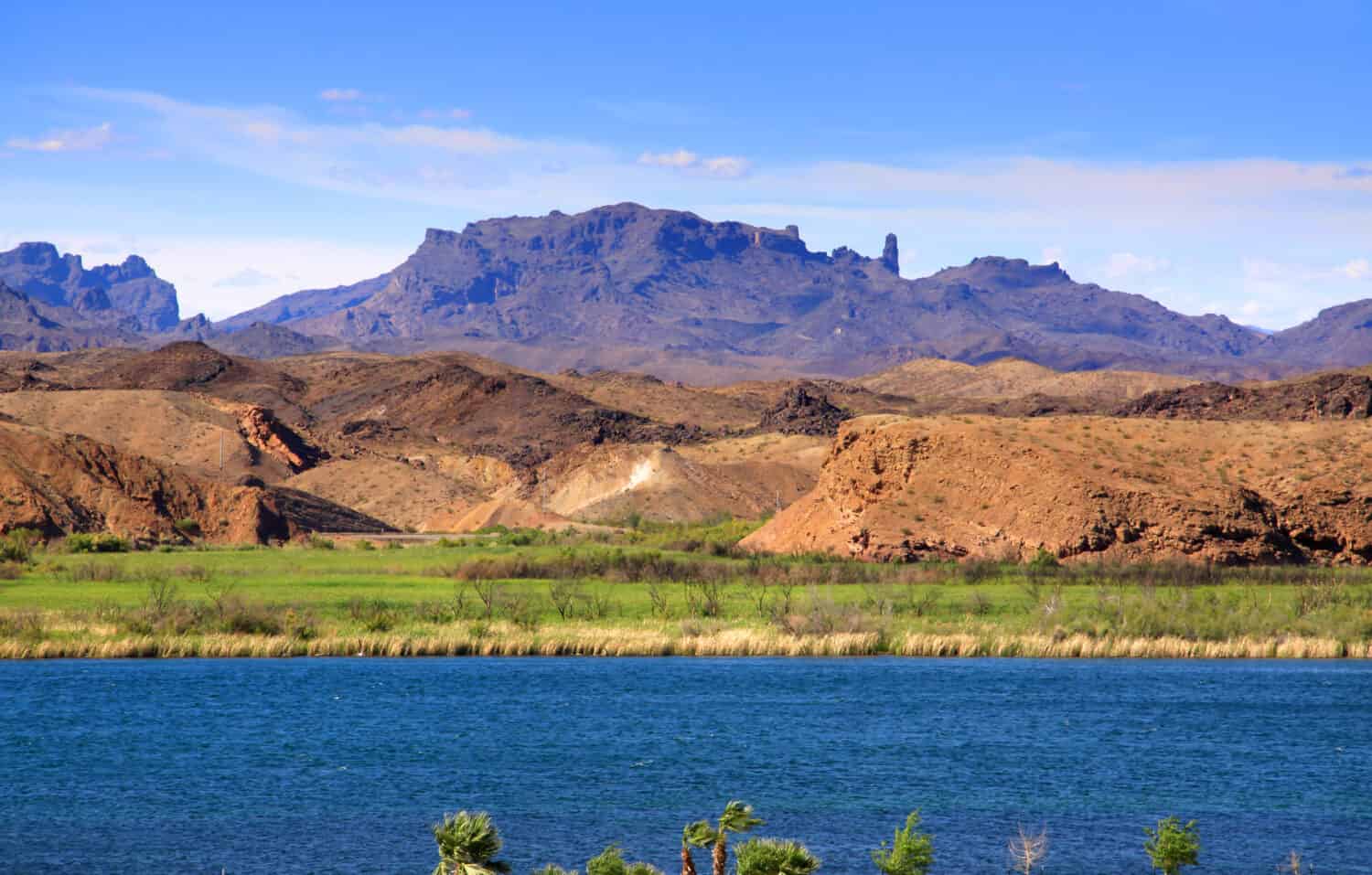
The landscape around Lake Havasu is stunning.
©SNEHIT PHOTO/Shutterstock.com
How the Size of Lake Havasu Compares to Other Lakes
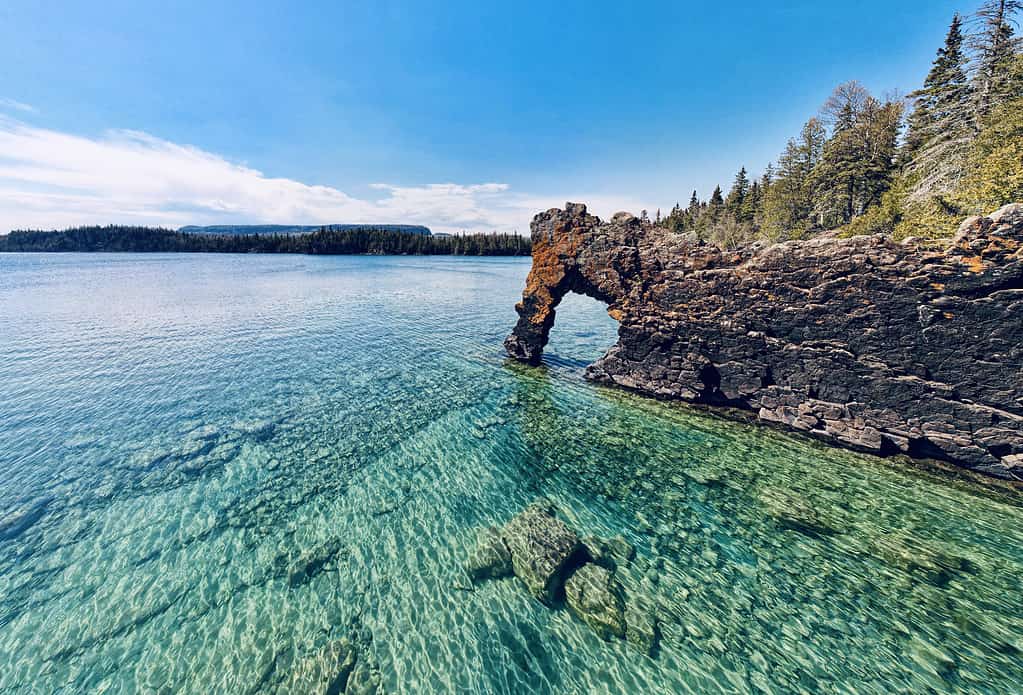
Lake Havasu is much smaller than other North American lakes, such as Lake Superior (pictured above).
©Wirestock Creators/Shutterstock.com
Unlike other recreational lakes in Arizona and neighboring states in the southwest, Lake Havasu is a boater’s paradise because it remains at a near-constant water elevation. As a result, boaters get to have fun in ideal weather and pristine boating conditions at all times of the year.
Lake Havasu is much smaller than many of the most well-known lakes in the United States, especially compared to giants like Lake Michigan, Lake Superior, the Great Salt Lake of Utah, and even Lake Tahoe or even Lake Powell and Lake Mead in Arizona (Learn how Lake Havasu stacks up against Arizona’s other lakes).
Things to Do at Lake Havasu
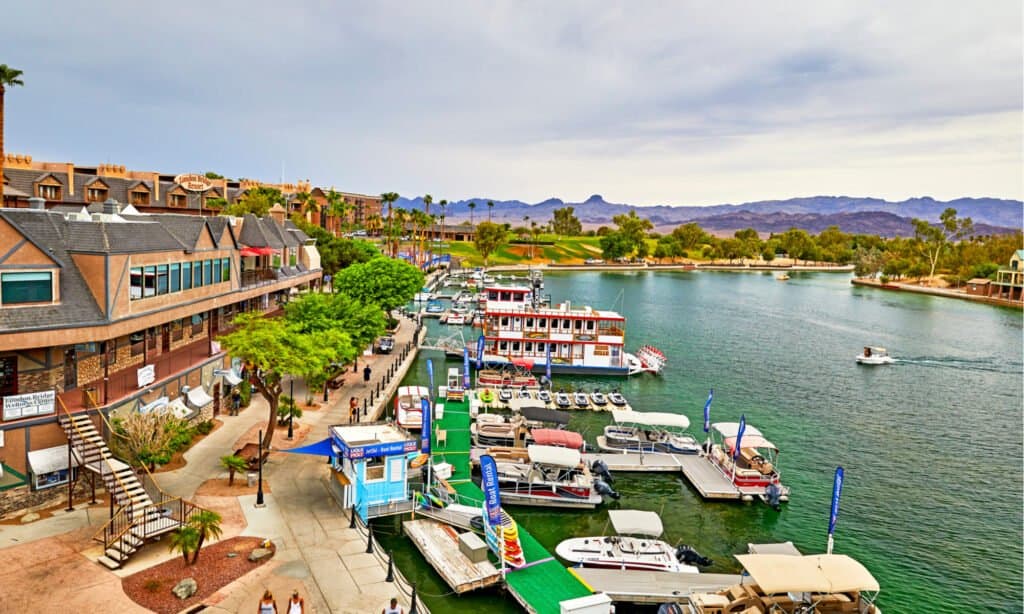
There is plenty to do on the shores of Lake Havasu.
©Pamela Au/Shutterstock.com
Lake Havasu State Park is an inviting shoreline for you to enjoy beaches, swimming, nature hiking trails, boating, and camping. Many visitors enjoy water sports on Lake Havasu, and the state park offers three boat ramps. You may also enjoy camping at one of the park’s 54 campsites, stay in one of 13 beach cabins, rent a special events area, picnic in the designated picnic locations, or enjoy the park’s beaches. The park’s Mohave Sunset Trail is a meandering 1.75-mile walk through the desert and beside the Lake Havasu shoreline.
Lake Havasu is also a key fishing destination to which anglers flock to participate in fishing tournaments. The lake is stocked with numerous fish species, including the popular catch of largemouth bass, smallmouth bass, striped bass, carp, crappie, razorback sucker, sunfish, channel catfish, and flathead catfish.
Discover the history of Lake Havasu and the surrounding area by visiting the Havasu Museum of History. This unique educational attraction tells visitors all about the area’s history, hosts events, and offers a gift shop where you can buy a memento from your time in Lake Havasu City.
Annual Festivals in Lake Havasu City, Arizona
Lastly, Lake Havasu City hosts numerous special events and festivals each year. These include the Havasu Balloon Festival & Fair and Buses by the Bridge in January; Winterfest Festival and the Lake Havasu Rockabilly Reunion in February; Bluegrass on the Beach Music Festival in March; the Lake Havasu Marine Association Boat Show in April; the Fireworks Over the Lake July 4th Celebration in July; Monster Storm Poker Run in October; the Sand Water, & RV Expo in November; Gem & Mineral Show in November; and Boat Parade of Lights in December. The summer months also feature boat regattas throughout the season, while the winters are the season for bass and striper fishing tournaments.
Wildlife Around Lake Havasu
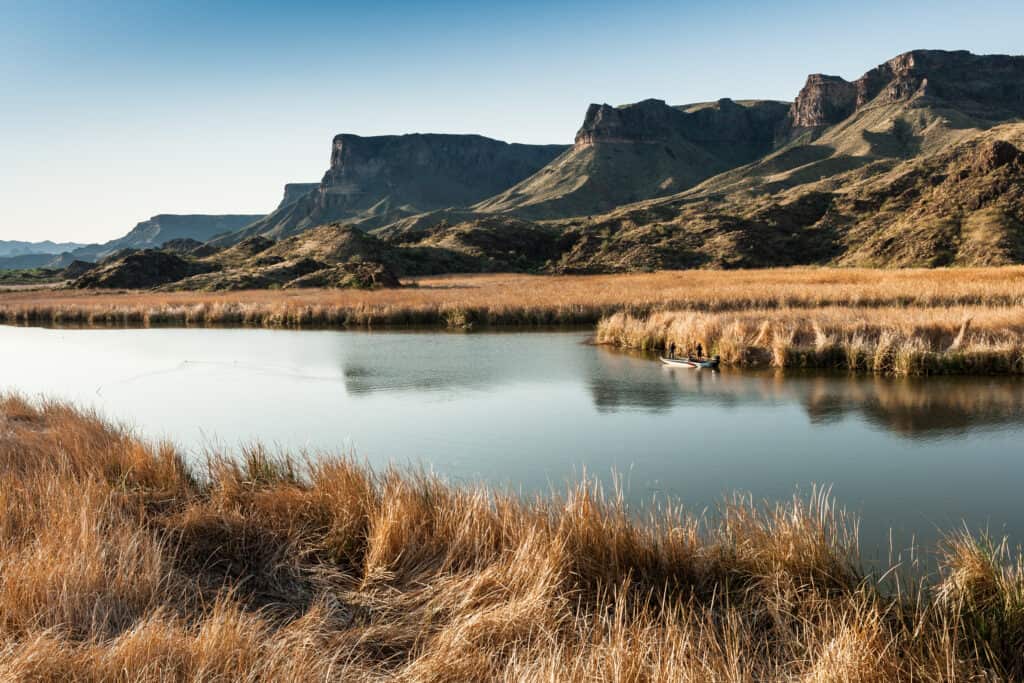
Lake Havasu has diverse wildlife and
plant
species surrounding the reservoir.
©Laurens Hoddenbagh/Shutterstock.com
Try hiking around Lake Havasu and exploring its nearby trails, and you will discover thriving wildlife habitats throughout the nearby landscape. The Havasu National Wildlife Refuge has 318 bird species, making it a birdwatcher’s paradise. This Wildlife Refuge is also an important place for native protects the riparian species to make their home, alongside other endangered species and neotropical migrants. You may find endangered razorback suckers swimming in nearby waterways, including in Lake Havasu itself. Doves and snow geese live in fields. Look closely, and you might see coyotes, foxes, and even bobcats streaking across the road searching for a rodent meal, hunting the local rabbits and mice. You should also look for desert bighorn, who scramble along steep rock faces. More elusive are the mountain lions who roam through the wilderness.
Lake Havasu is also home to diverse plant species. Look for cottonwood (Populus spp.), willow (Salix spp.), mesquite (Prosopis spp.), and a variety of cactus species. During the spring and summer, you may see beautiful blooms, such as lilies (Liliaceae family), Agave spp., daisies (Eriophyllum spp.), primroses (Oenothera spp.), and poppies (Argemone spp. and Eschscholzia spp.). Gorgeous colorful wildflowers are a beautiful reward following a rainy winter.
Like in other parts of Arizona and the wider U.S., Lake Havasu State Park does have many non-native plants and animals. These non-native species came to the area accidentally and by purposeful human intervention. Some of the non-native species include the American bullfrog (Rana catesbeiana). Inside Lake Havasu, you may also find the aquatic weed known as spiny naiad (Najas marina).
Fun Facts About Lake Havasu
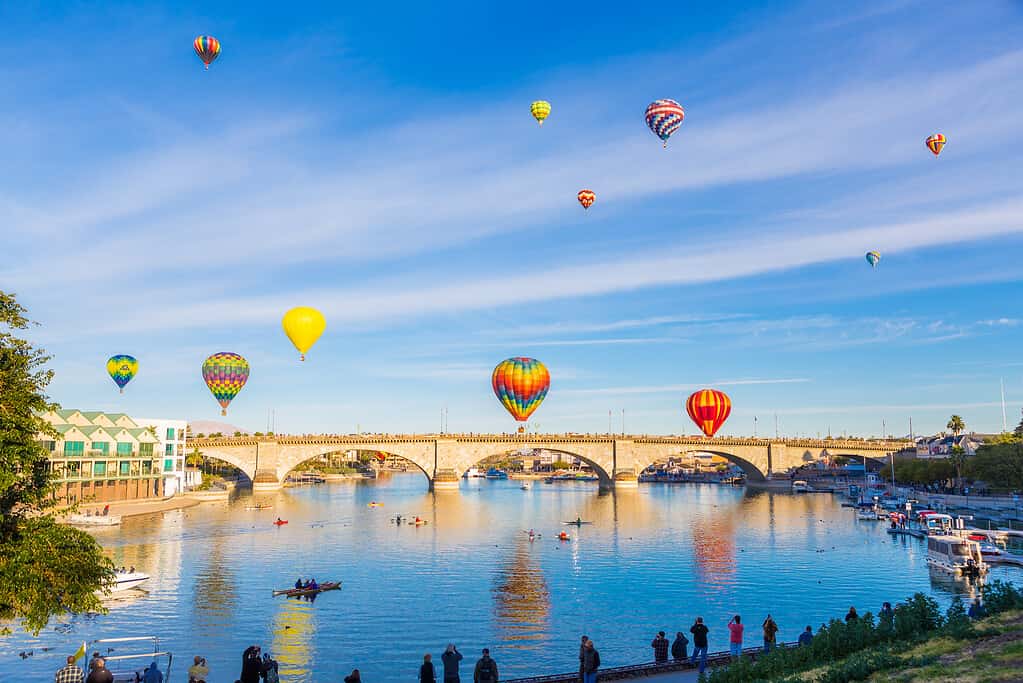
Multiple hot air balloons in the sky over the relocated London Bridge, which now sits in Lake Havasu City, Arizona.
©iStock.com/AngelMcNallphotography
- Did you know that the original London Bridge is located near Lake Havasu? As a matter of fact, London Bridge was rebuilt in Arizona and currently links the mainland to a marina and “island” path within Lake Havasu! When you walk across the bridge, take in the love locks left on the bridge to symbolize the lasting commitment of in-love visitors. If your boat underneath the bridge, you can look up to see lasting markers – the numbering code that was used to help deconstruct and reconstruct the bridge from its location in London to its permanent home in Arizona.
- Lake Havasu City was a planned community founded in 1964. The development of Lake Havasu City was promoted by Robert P. McCulloch, who helped the area’s recreational development and enabled the area to become a key retirement location for senior citizens. The current population of Lake Havasu City is approximately 56,000. However, it is a major part of southern Mohave County, one of the fastest-growing counties in the United States.
- Lake Havasu has 28 lighthouses, built after a series of boating accidents. The lighthouses on the west side of Lake Havasu are based on famous lighthouses on the West Coast, and the east side lighthouses are based on famous East Coast lighthouses. Those on the island are based in the Great Lakes region.
- The size of Lake Havasu does not deter visitors from enjoying its lakeshore and on-water sports! This area attracts 750,000 visitors a year.
The photo featured at the top of this post is © iStock.com/wingedwolf
Thank you for reading! Have some feedback for us? Contact the AZ Animals editorial team.



